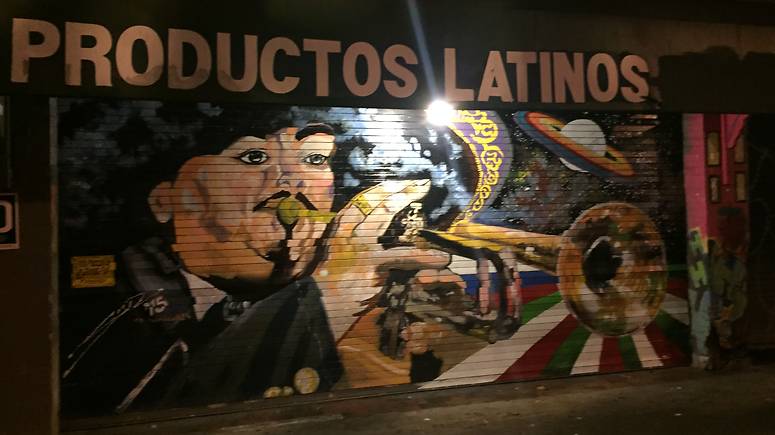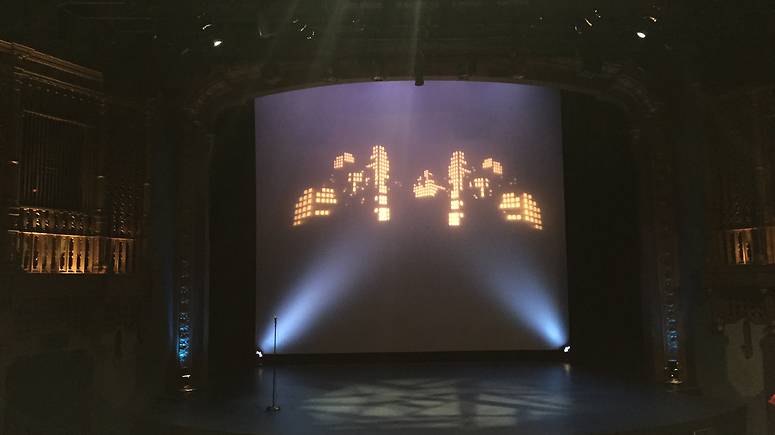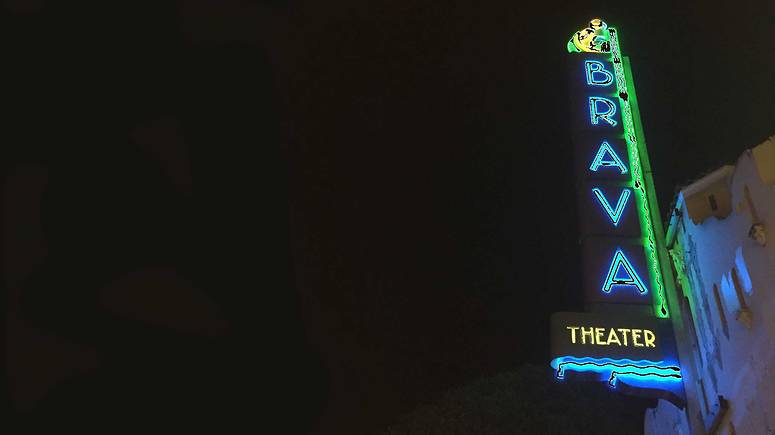
A collaborative publication of the Latin American Studies Program
Divisadero
Fall 2015
A Look at The Other Barrio
In late October of this year, the film The Other Barrio premiered at the Brava Theater in the Mission District of San Francisco. I was fortunate enough to attend, and get an intimate account with the filmmakers and the excited audience.
The city of San Francisco has always gripped the imaginations of onlookers from every corner of the country. Freedom, expression, counter-culture are all terms directly associated with the jewel of the west coast. However, these days the freedom has turned to meta-data, expression to texting and emojis, and counter-culture to lack of culture. The battle grounds and the fight for culture can be seen most clear in the Mission District where the fight is forming in the streets, in the murals and art pieces, and on film.
The Other Barrio premiered in the beautiful and historic Brava Theater deep in the heart of the Mission District on 24th Street. The film confronts the current elements of the housing crisis, the mass gentrification of the Latino culture, and the corruption of wealthy developers looking for lucrative investments.
The film starts off with a San Francisco housing inspector, Roberto Morales, played by actor Richard Montoya. Narrating in a 'film noir' style, like a modernized, Latino Humphrey Bogart, the story tells of Morales and his attempt to uncover the truth surrounding a fatal fire of a residential hotel in the Mission District. he inspector comes to relate to the fragile state of the culture in the Mission, as well as the vast wealth being created from the literal ashes of the tragedy.
Filled with comedic anecdotes of the technology industry’s changing landscape of the city, the story is actually based on a tragic true story of six people dying in the 1975 Garlant Apt housing fire, and the housing inspector trying to find the hidden motive. The mystery plays out as Morales becomes caught in a web of bribery, murder, and corruption involving powerful, wealthy real estate interests with the help of City Hall.
This independent, modern film-noir is based on a short story named The Other Barrio by San Francisco Poet Laureate Alejandro Murguia, and first shown in the anthology San Francisco Noir. The portrayal of the classic hard-nosed, downtrodden film-noir inspector provides a modern twist and specificity to the city of San Francisco and the Mission District. Showcasing the beautiful murals found around 24th Street, the Women’s Center, and other sites throughout the district, the viewer sees a side of the city unknown to most. The classic shots of San Francisco are presented, with a great aerial shot of the Golden Gate Bridge, the Transamerica building, and others, but the focus of the Mission District is quite refreshing.
While speaking with Executive Producer Lou Dematteis, he described the location choices as essential to the film’s authenticity. "We wanted to give a realistic feel to it. Parts that people hadn’t seen before. No cable cars."
The film is addressing more an aesthetic response from the audience. Before the viewing, there were community-activists promoting voting of Prop I and F in favor of the housing moratorium and in support for local communities. Obviously, their work was not enough. Both propositions failed, and have challenged activists to fight even harder against gentrification. Dematteis spoke out about the elections. "Both props failed because of the financial components. There was just not enough financial support from the opposition to match the contributions of those pushing for gentrification. There were a lot of false statements made… But it did bring awareness to the issue, and we feel that is a small victory, in itself."
The film is striking a chord, not only with the San Francisco community but also with other cities facing some of the same problems. The movie has been touring a number of film festivals around the country. "Gentrification is a big issue in DC as well. Most cities in the US and Europe are feeling the effects of this phenomena, and many groups such as Latinos, African-Americans, and Muslim communities feel a sense of disassociation with the culture at large."
While providing a strong sense of meaning with its message, the film itself does have some aesthetic limitations. The force and grit of the film-noir style, while entertaining, feels more like a cartoon than reality. The lead character, Morales, being overdramatized as the vengeful aggressor feels artificial by the end. The necessity for a 'femme fatale,' played by Veronica Valencia, seemed forced and overdramatic, as well.
Struggle has been the theme of the film, not only with the story of those on the screen but with the filmmakers as well. Beginning the project in 2011 with the adaptation of the story and beginning fundraising, the crew began shooting in 2012. With funds remaining an issue, the piece was shot in bits and pieces over the next two years, with editing taking over a year as well. The project was originally going to be a series of stories based all over the San Francisco community, including Chinatown and North Beach, but budget constraints once again took precedent. This may be a reason why the scenes of the film feel very choppy by the end. With different writers, and different story lines being routed out, it creates a climate difficult to maintain continuity.
With great intentions, the aesthetic struggles do affect the enjoyment of the film, but still conveys very relevant and poignant issues facing the city of San Francisco today. Definitely a fun and interesting film, with a clear message against gentrification in the Mission District, it is worth seeing.
The Other Barrio is hoping to have future showings, including tentative plans with the Victoria Theater and the De Young Museum.



